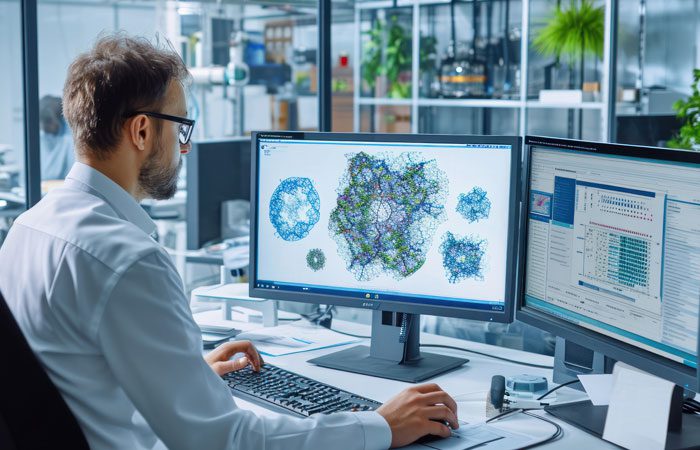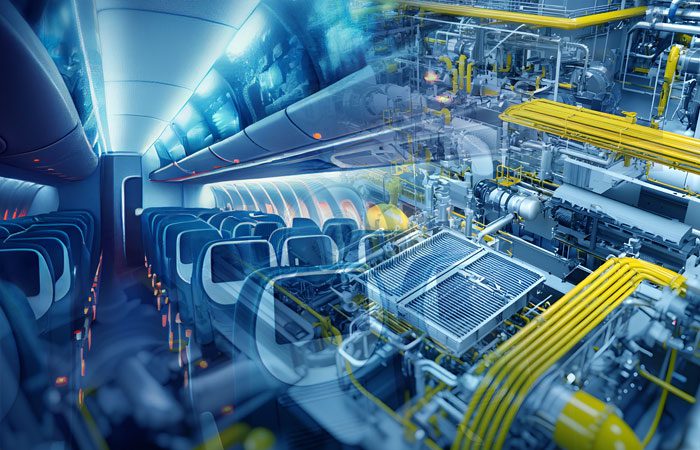
Revitalizing Industrial Infrastructure: Sustainable Utilities Design for Existing Plants in Europe
Across Europe, many plant owners are asking the same question: How can we make our operations more energy-efficient and compliant without tearing everything down? The answer often lies not in large-scale overhauls, but in something far more practical—upgrading the utilities that keep the plant running every day.
In older industrial facilities, systems like HVAC, fire protection, and MEP (mechanical, electrical, and plumbing) often go unnoticed until they cause problems. But these core utilities are not just background infrastructure—they directly impact energy use, safety compliance, maintenance costs, and ultimately, your plant’s sustainability footprint.
Today, with energy prices rising and regulations evolving, there’s a clear opportunity for owners and operators to rethink how these systems work together—without the need for disruptive reconstruction.
The Smart Starting Point: Energy Audits
Before any retrofit or upgrade project, a detailed energy audit is a must. This step is about understanding how and where your plant uses energy, and more importantly, where it wastes it.
An audit will typically examine:
- HVAC energy consumption
- Electrical loads and power quality
- Hot water and steam generation systems
- Compressed air leaks and inefficiencies
- Control systems and automation gaps
With today’s technologies—like thermal imaging, digital twins, and real-time monitoring—you can go far beyond surface-level assessments. These audits often uncover surprisingly simple fixes that can drastically cut energy usage: fixing insulation gaps, recalibrating airflow, or optimizing control logic.
HVAC Optimization: Doing More with Less
In many industrial plants, HVAC systems were installed years ago with minimal thought to energy efficiency. Today, these systems often run constantly, serving unoccupied zones, overcooling workspaces, or functioning inefficiently due to lack of zoning.
Modern HVAC optimization doesn’t mean replacing everything—it means making what you have smarter.
Practical improvements include:
- Demand-Controlled Ventilation (DCV): Adjusts air supply based on occupancy or production needs.
- Energy Recovery Ventilation (ERV): Reclaims heat from exhaust air to pre-condition fresh air.
- High-Efficiency Pumps & Motors: Uses less power for the same (or better) performance.
- Building Management Systems (BMS): Centralizes control for all utilities and enables data-driven decision-making.
A well-optimized HVAC system reduces not just your utility bill, but your carbon emissions—and improves indoor air quality for workers.
Fire Protection Upgrades: Safety with Sustainability
Fire protection systems are heavily regulated for good reason. But many legacy systems—while once compliant—no longer meet current European norms such as EN 12845:2020, which include updates around risk categorization, water supply, and system resilience.
Rather than rebuild from scratch, plants can retrofit existing systems in smart ways:
- Replace outdated sprinkler heads with modern, low-flow or quick-response models
- Add booster pumps or water storage where pressure requirements fall short
- Install remote monitoring for flow rates, valve positions, and fault detection
- Integrate fire alarms with BMS for quicker response and unified oversight
These steps not only enhance safety but also conserve water—aligning fire protection with broader sustainability goals.
MEP Enhancements: Unseen, But Not Unimportant
Mechanical, electrical, and plumbing (MEP) systems are often overlooked during upgrades, yet they tie everything together. Faulty wiring, undersized piping, or inefficient mechanical setups quietly drain energy and create maintenance risks.
Targeted improvements include:
- Motor upgrades to IE3 or IE4 energy-efficient standards
- Power factor correction to reduce energy waste and improve equipment life
- Leak-proof plumbing systems with smart sensors
- LED retrofitting with motion or daylight sensors
MEP upgrades offer some of the highest returns on investment in plant operations—particularly when done in conjunction with energy audits and HVAC assessments.
The Compliance Angle: Staying Ahead, Not Just Afloat
In addition to EN 12845, regulations like the EU Energy Efficiency Directive and local building codes are pushing plant operators to take measurable steps toward sustainability. Inaction can lead to non-compliance, higher operational costs, and loss of competitive edge.
By proactively upgrading utilities, you ensure:
- Audit readiness for clients, partners, and regulatory bodies
- Alignment with ESG goals and corporate sustainability reporting
- Reduced operational risk through better control, monitoring, and fail-safes
In other words, investing in utilities upgrades is as much about business resilience as it is about energy savings.
How TAAL Tech Can Help
At TAAL Tech, we believe sustainability starts with practical engineering. We support industrial clients across Europe with tailored solutions for utilities optimization—especially in brownfield and operating plant environments.
Our services include:
- Detailed energy audits and simulation-backed analysis
- Retrofit design and optimization for HVAC and MEP systems
- Fire protection assessments in line with EN 12845 and other EU codes
- Seamless integration of control systems with your existing BMS
What sets us apart is our ability to bring domain-specific insight and cross-functional engineering expertise together under one roof. Whether you’re in pharmaceuticals, food processing, chemicals, or heavy industry, we understand the technical, regulatory, and financial challenges—and help you solve them efficiently.
And with our hybrid offshore/onshore delivery model, we provide high-quality outcomes at a competitive cost, while remaining fully responsive to your on-site needs.
Small Steps, Big Impact
Sustainability doesn’t always have to mean solar panels, wind turbines, or brand-new factories. Often, the most effective steps begin with what’s already in place.
Optimizing your utilities—HVAC, fire protection, and MEP—can lower your energy consumption, improve safety, and help you stay compliant with evolving European standards. And most importantly, it can be done with minimal disruption to your day-to-day operations.
At a time when every kilowatt and every euro counts, smart utilities design is not just a technical upgrade—it’s a business strategy.


